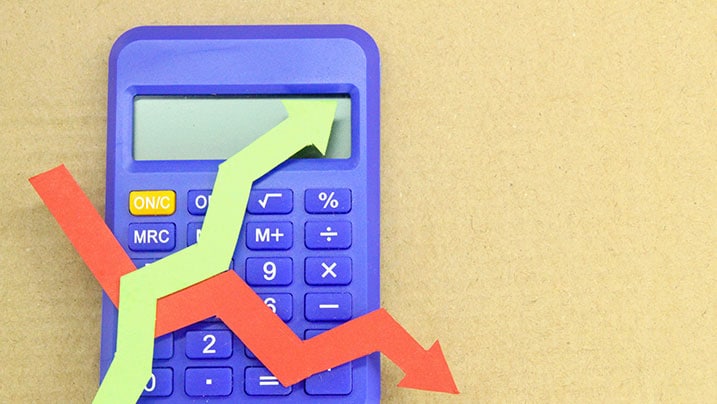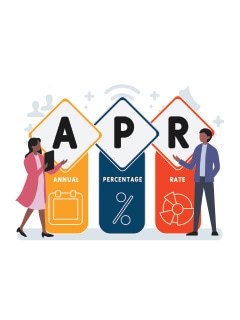CKYC Registry
-
Customer Service Contact us Service request Locate a branch
Find all the help you need
Scan the QR, get our app, and find help on your fingertips

Help CenterSupport topics, Contact us, FAQs and more
-
Login
Are you ready for an upgrade?
Login to the new experience with best features and services
-
Login
Are you ready for an upgrade?
Login to the new experience with best features and services
- Accounts
-
Deposits
IDFC FIRST Bank Deposits
View all Deposits -
Loans
IDFC FIRST Bank Loans
View all Loans - Wealth & Insure
-
Payments
IDFC FIRST Bank Payments
View all Payments -
Cards
IDFC FIRST Bank Cards
View all Cards - Blogs
- Corporate Account
-
Cash Management Services
IDFC FIRST Bank Cash Management Services
View all Cash Management Services - Supply Chain Finance
-
Corporate Lending
IDFC FIRST Bank Lending
View all -
Treasury
IDFC FIRST Bank Treasury
See more details - NBFC Financing
Support topics, Contact us, FAQs and more
- IDFC FIRST Bank Accounts
-
Savings Account
-
Corporate Salary
Account -
Senior Citizens
Savings Account -
First Power
Account -
Current Account
-
NRI Savings
Account -
TASC Institutional
Account -
Savings Account
Interest Calculator
- IDFC FIRST Bank Deposits
-
Fixed Deposit
-
Recurring Deposit
-
NRI Fixed Deposit
-
Safe Deposit Locker
-
FD Calculator
-
RD Calculator
- IDFC FIRST Bank Loans
-
Personal Loan
-
Consumer Durable
Loan -
Home Loan
-
Business Loan
-
Professional Loan
-
Education Loan
-
New Car Loan
-
Pre-owned Car Loan
-
Two Wheeler Loan
-
Pre-owned Two
Wheeler Loan -
Commercial Vehicle
Loan -
Gold Loan
-
Loan Against Property
-
Loan Against Securities
-
Easy Buy EMI card
-
Personal Loan
EMI Calculator -
Education Loan
EMI Calculator -
Home Loan
EMI Calculator
- IDFC FIRST Bank Wealth & Insure
-
FIRST Select
-
FIRST Wealth
-
FIRST Private
-
Mutual Funds
-
Sovereign Gold Bond
-
Demat Account
-
Term Insurance
-
Life Insurance
-
Health Insurance
-
General Insurance
-
Bonds
-
Loan Against
Securities -
Portfolio Management
Service
- IDFC FIRST Bank Payments
-
FASTag
-
Credit Card
Bill Payments -
UPI
-
Funds Transfer
-
Forex Services
-
Pay Loan EMI
- IDFC FIRST Bank Cards
-
Ashva :
Metal Credit Card -
Mayura :
Metal Credit Card -
FIRST Millennia
Credit Card -
FIRST Classic
Credit Card -
FIRST Select
Credit Card -
FIRST Wealth
Credit Card -
FIRST WOW!
Credit Card -
Deals
-
Debit Cards
-
Co-branded Cards
-
Credit Card
EMI Calculator -
FIRST Corporate
Credit Card -
FIRST Purchase
Credit Card -
FIRST Business
Credit Card
- Premium Metal Credit Cards
-
AshvaLifestyle1% Forex₹2,999
-
MayuraLifestyleZero Forex₹5,999
-
FIRST PrivateInvite Only
- Best for travellers
-
MayuraZero ForexMetal₹5,999
-
Ashva1% ForexMetal₹2,999
-
FIRST WOW!Zero ForexTravelLifetime Free
-
FIRST SWYPTravel OffersEMI₹499
-
FIRST Select1.99% ForexLifestyleLifetime Free
-
FIRST Wealth1.5% ForexLifestyleLifetime Free
-
Club VistaraTravelLifestyle₹4,999
-
IndiGo IDFC FIRST Dual Credit CardTravelLifestyle₹4,999
- Max benefits, Free for life
-
FIRST Classic10X RewardsShoppingNever Expiring Rewards
-
FIRST Millennia10X RewardsShoppingNever Expiring Rewards
-
FIRST Select10X RewardsLifestyle1.99% Forex
-
FIRST Wealth10X RewardsLifestyle1.5% Forex
-
FIRST WOW!RewardsTravelZero Forex
-
LIC ClassicRewardsInsuranceShopping
-
LIC SelectRewardsInsuranceShopping
- Reward Multipliers
-
AshvaLifestyleMetal₹2,999
-
MayuraLifestyleZero Forex₹5,999
-
FIRST ClassicNever Expiring RewardsShoppingLifetime Free
-
FIRST MillenniaNever Expiring RewardsShoppingLifetime Free
-
FIRST SelectNever Expiring RewardsLifestyleLifetime Free
-
FIRST WealthNever Expiring RewardsLifestyleLifetime Free
- Rewards & Credit on UPI
-
FIRST Power+FuelUPI₹499
-
FIRST PowerFuelUPI₹199
-
FIRST EA₹NVirtual1% Cashback₹499
-
FIRST DigitalVirtualUPI₹199
-
IndiGo IDFC FIRST Dual Credit CardUPITravelDual cards
- Fuel and Savings
-
FIRST PowerRewardsUPI₹199
-
FIRST Power+RewardsUPI₹499
-
LIC ClassicRewardsInsuranceShopping
-
LIC SelectRewardsInsuranceShopping
- Express and Flaunt
-
AshvaMetal1% Forex₹2,999
-
MayuraMetalZero Forex₹5,999
-
FIRST SWYPEMIOfferMAX₹499
-
FIRST MillenniaRewardsShoppingLifetime Free
- FD Backed rewarding Credit Cards for all
-
FIRST EA₹NVirtualCashback₹499
-
FIRST WOW!Zero ForexTravelLifetime Free
-
CreditPro Balance TransferTransfer & SaveReduce InterestPay Smartly
- IDFC FIRST Bank NRI Forex Solutions
-
Send money to India-Wire transfer
-
Send money to India-Digitally
-
Send money abroad
-
Max Returns FD (INR)
- IDFC FIRST Bank MSME Accounts
-
Platinum Current
Account -
Gold
Current Account -
Silver Plus
Current Account -
Merchant Multiplier
Account -
Agri Multiplier
Account -
TASC Institutional
Account -
Dynamic Current
Account -
World business
Account -
First Startup
Current Account
- IDFC FIRST Bank Business Loans
-
Business Loan
-
Professional Loan
-
Loan Against Property
-
Business Loan for Women
-
Working Capital Loan
-
Construction Equipment Loan
-
Machinery Loan
-
Healthcare Equipment Loan
- IDFC FIRST Bank Business Solutions
-
Payment Solutions
-
Tax Payments
-
Doorstep Banking
-
Point of Sale (POS)
-
Escrow Accounts
-
NACH
-
Payment Gateway
-
UPI
-
Virtual Accounts
-
As per amendment in the Income Tax Rules, PAN or Aadhaar are to be mandatorily quoted for cash deposit or withdrawal aggregating to Rupees twenty lakhs or more in a FY. Please update your PAN or Aadhaar. Kindly reach out to the Bank’s contact center on 1800 10 888 or visit the nearest IDFC FIRST Bank branch for further queries.
-
-
Most Searched
Sorry!
We couldn’t find ‘’ in our website
Here is what you can do :
- Try checking the spelling and search
- Search from below suggestions instead
- Widen your search & try a more generic keyword
Suggested
Get a Credit Card
Enjoy Zero Charges on All Commonly Used Savings Account Services
Open Account Now
Interest rate swaps help exchange fixed or floating interest rates to reduce or increase the exposure to interest rate fluctuations.
Companies need funds to expand and grow their business. They usually acquire money from banks, which charge interest at a rate that depends on many factors. It can increase as well as decrease, which isn't ideal for all companies. An interest rate swap helps companies customise their interest rate based on a specified principal amount.
It commonly involves an exchange between fixed to floating interest rates or vice versa and helps marginally reduce companies' borrowing costs. This article gives an insight into the interest rate swap, its benefits, and its types.
READ MORE
What is the meaning of an interest rate swap?
Interest rate swap helps institutions manage their risks due to fluctuation in the interest rates. It is a contract between stakeholders where interest payments are exchanged according to their needs.
It involves an exchange of a floating interest rate for a fixed rate or vice versa. Swaps help marginally lower the interest rates that need to be paid or reduce/increase the exposure to fluctuating interest rates. OIS (Overnight Index Swap) is amongst the most popular benchmark swaps due to its liquidity.
Understanding interest rate swap
Interest rate swaps are used to exchange cash flow to minimise losses due to fluctuating interest rates. Since most transactions are performed over the counter, an interest rate swap helps the involved parties customise their contracts as per the desired specification.
In India, the MIBOR (Mumbai Interbank Offered Rate) is the floating benchmark against which the companies settle their swaps.
Types of interest rate swap
Here are three different types of interest rate swaps.
- Fixed-to-floating interest rates swap: In this type of interest rate swap, a customer enters the contract, receives cash flow through a fixed interest rate, and pays out at floating interest rates. The amount of interest is calculated on a predetermined principal amount. The floating interest rates are referenced through the MIBOR benchmark set daily.
- Floating-to-fixed interest rates swap: In this type of interest rate swap, a customer enters the contract, receives cash flow through floating interest rates, and pays out at fixed interest rates. Again, the interest is calculated on a specified principal amount.
- Float-to-float interest rate swap: In this kind of interest rate swap, the companies enter a contract and exchange receipts on a specified principal amount based on floating rates referenced at two separate benchmarks. The companies can also use float-to-float interest swap to change the tenure or type of floating-rate index to get attractive rates.
What is the swap rate?
The swap rate is the fixed interest rate demanded by the receiver against the uncertainties of paying short-term MIBOR floating rates. At the time of the swap agreement, the entire fixed rate flow remains equal to the forecasted floating-rate payment as depicted by the forward MIBOR curve. Swap rates are usually quoted in fixed-rate or swap spread. The swap spread is the difference between the swap rate and the government's bond yield during similar maturity.
How does the swap contract work?
When the swap contract is established, the total amount of fixed interest rate is considered equal to the forecasted floating interest rate cash flow. However, the floating interest rates fluctuate and can eventually incur losses to the cash flow receiver. If the interest rate swap becomes unprofitable, the counterparty can exchange countervailing swaps for shedding the interest rate risk of the swap.
How to invest in an interest rate swap?
For investors and corporate treasurers, interest rate swaps are an essential financial tool. Following are the ways to invest in interest rate swaps.
- Portfolio management: Interest rate swaps help adjust the interest exposure and minimise the risks of interest rate volatility. Risk managers can reduce fluctuations and increase profits by changing the interest rate exposure per requirement. In addition, the interest rate swaps can also act as a less liquid fixed income investment tool.
- Corporate finance: Companies with MIBOR-linked loans or other floating rate liabilities can enter an interest rate swap and pay a fixed rate while receiving floating cash flow.
- Risk management: Financial institutions and banks process huge transactions in the form of loans, investments, and derivative contracts. The interest rate swap helps offset the fluctuating interest rate risk for such transactions.
Interest rate swap helps corporates and investors minimise interest rate risks. By swapping fixed and floating interest rates, risk managers can make profitable deals while maintaining optimal cash flow per the company's requirements. Interest rate swapping can also offer opportunities for low liquidity fixed-income investments.
Disclaimer
The contents of this article/infographic/picture/video are meant solely for information purposes. The contents are generic in nature and for informational purposes only. It is not a substitute for specific advice in your own circumstances. The information is subject to updation, completion, revision, verification and amendment and the same may change materially. The information is not intended for distribution or use by any person in any jurisdiction where such distribution or use would be contrary to law or regulation or would subject IDFC FIRST Bank or its affiliates to any licensing or registration requirements. IDFC FIRST Bank shall not be responsible for any direct/indirect loss or liability incurred by the reader for taking any financial decisions based on the contents and information mentioned. Please consult your financial advisor before making any financial decision.
The features, benefits and offers mentioned in the article are applicable as on the day of publication of this blog and is subject to change without notice. The contents herein are also subject to other product specific terms and conditions and any third party terms and conditions, as applicable. Please refer our website www.idfcfirstbank.com for latest updates.























